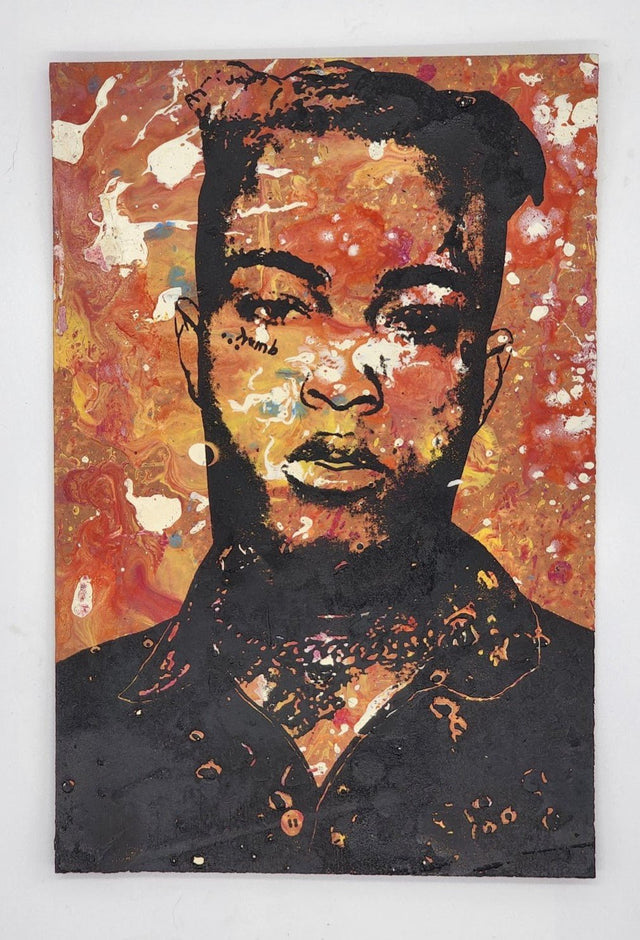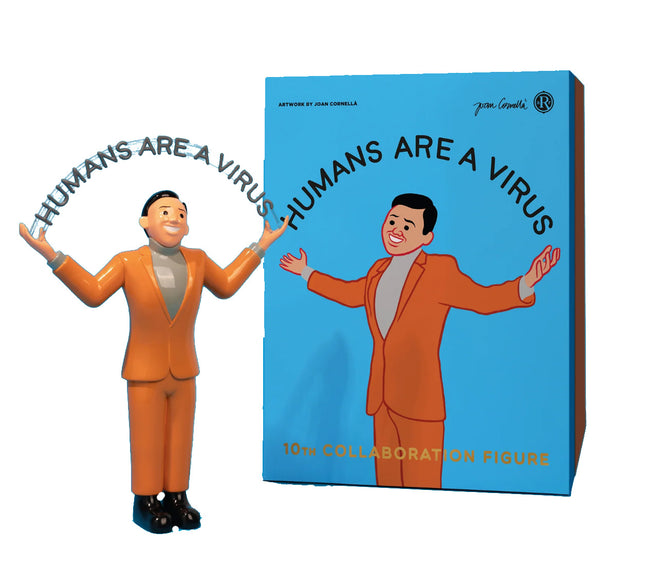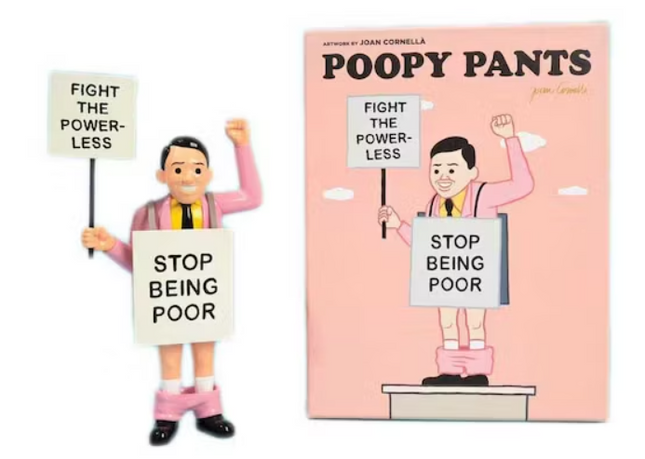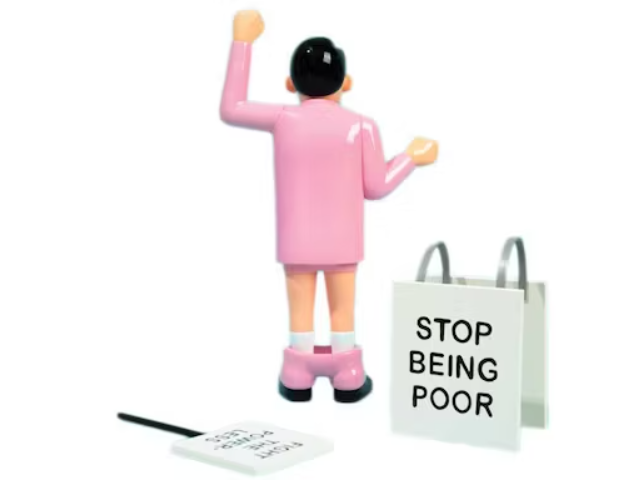
Man Male


Joan Cornellà Humans Are A Virus Designer Art Toy by Joan Cornellà
Humans Are A Virus Designer Art Toy by Joan Cornellà Limited Edition Vinyl Sculpture Collectible Artwork by Pop Street Artist. 2023 Limited Edition Artwork Size 5x10.2 New In Box Printed Signature on Foot. Joan Cornellà's "Humans Are A Virus" and Its Commentary in Art In street pop art and graffiti artwork, Joan Cornellà has established himself as a distinctive voice known for his striking and often discomforting visual commentary on modern life. His "Humans Are A Virus" designer art toy represents his satirical approach, merging the innocence associated with toys with a stark and thought-provoking message. Released in 2023 as a limited edition collectible, this vinyl sculpture showcases Cornellà's printed signature on the foot, marking it as a genuine piece from the artist's collection. The piece presents a character in an orange suit, arms wide open, with the phrase "#HumansAreAVirus" emblazoned above. The artwork resonates with the duality of human existence and the impact of humanity on the planet, a recurring theme in Cornellà's work. Like much of his other work, this art toy acts as a mirror to society, reflecting the often-ignored truths about human behavior and its consequences. The Artistic Significance of Cornellà's Vinyl Collectibles The "Humans Are A Virus" art toy by Joan Cornellà is not just a collectible item; it's a slice of contemporary art that encapsulates the ethos of street art and the broader pop art movement. Once relegated to the realm of child play, vinyl toys have been transformed by artists like Cornellà into powerful vehicles for artistic expression. These limited edition pieces, often launched with great anticipation and fanfare, have become coveted items for collectors and art enthusiasts alike. Cornellà's work is particularly renowned for its ability to provoke a visceral reaction. By using the medium of toys, he disrupts the viewer's expectation of what is playful and innocent, instead delivering a visually striking and intellectually stimulating piece. The size of the piece, modest yet substantial, allows it to stand out in any collection, drawing attention to its underlying message about humanity's self-destructive tendencies. Joan Cornellà's Influence on Contemporary Pop and Street Art Joan Cornellà has cemented his position as a significant figure in the world of pop and street art. His work transcends traditional canvases and gallery spaces, finding its way into the urban environment where it is accessible to a broader audience. The "Humans Are A Virus" sculpture symbolizes how Cornellà has bridged the gap between art and social commentary, delivering aesthetically unique and rich meaning. In street art, where the goal is often to challenge passersby and provoke thought or dialogue, Cornellà's vinyl figures stand as three-dimensional manifestations of these aims. They are tangible representations of the ideas that street artists typically convey through murals and graffiti. As such, Cornellà's contributions have broadened the scope of what street pop art can be, demonstrating that the impact of this art form can be just as powerful when held in hand as when it's encountered on a city wall. Joan Cornellà's "Humans Are A Virus" designer art toy is a profound piece of contemporary art that encapsulates his work's satirical and often cynical essence. It stands as a commentary on human impact, a critique wrapped in the playful form of a toy, and a collectible that captures the imagination and provokes thought. Through this and other works, Cornellà continues to influence and shape the conversation in street pop art and graffiti artwork, challenging viewers to see the world through a lens that is as critical as it is comical.
$1,383.00


Joan Cornellà Poopy Pants Designer Art Toy by Joan Cornellà
Poopy Pants Designer Art Toy by Joan Cornellà Limited Edition Vinyl Sculpture Collectible Artwork by Pop Street Artist. 2021 Limited Edition of TBD Artwork Size 5x10.2 New In Box Printed Signature on Foot. Statue of a man in pink suit with fist up holding two signs reading: Stop Being Poor & Fiught The Power-Less. Joan Cornellà's "Poopy Pants" Designer Art Toy is a testament to the audaciousness and satirical depth characteristic of much of today's pop and street art. This limited edition vinyl sculpture released in the spring/summer of 2021 presents a provocative and simultaneously comedic vision. Depicting a figure in a bright pink suit, pants embarrassingly pulled down to his ankles, the artwork wields a directness in its messaging. A bold sign draped over the figure's torso declares, "Stop Being Poor," juxtaposed with another sign he holds aloft proclaiming, "Fight The Powerless." The imagery here is rife with paradox and contradiction. On one hand, the call to "Stop Being Poor" might be a sarcastic commentary on the oversimplification of societal ills and the ignorance of those in power. On the other, the message to "Fight The Powerless" lampoons the misdirection of societal rage and the frequent scapegoating of those least equipped to defend themselves. The use of the pink suit, a non-traditional and flashy color, further emphasizes the piece's defiance of convention. Joan Cornellà's artistry delves into the sometimes uncomfortable realm of social commentary, forcing viewers to confront and question established norms and values. This vinyl sculpture, with its printed signature on the foot, serves as both a collector's item and a powerful conversation piece. Standing proudly at 5x10.2 inches, the "Poopy Pants" figure is emblematic of the continued evolution of pop and street art, blurring the lines between humor, commentary, and protest.
$1,383.00





